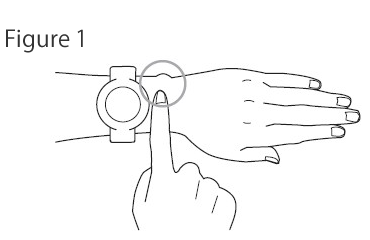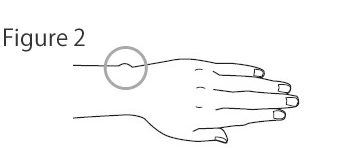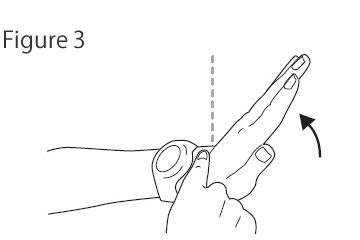Heart Rate Measurement Precautions
The following points should be noted in order to measure heart rate properly.
Heart Rate Measurement Functions
- The back cover of the watch has a built-in sensor that detects your pulse. This is used to calculate and display an approximate heart rate value. The factors below can cause error in the displayed heart rate value.
- How the watch is affixed to the wrist
- Individual wrist characteristics and condition
- Training type and/or intensity
- Sweat, dirt, and/or other foreign matter around the sensor
All of this means that heart rate values displayed by the watch are approximate, and no guarantees are made concerning their accuracy. - The heart rate measurement function of this watch is intended for recreational purpose, and should not be used in any way for medical purpose.
Movements that affect heart rate measurement
- Activities or specific movements * in which you move your arm only violently may affect the heart rate measurement and cause an error in the heart rate data displayed by this unit.
*Movement that moves the wrist violently or movement that twists the wrist (eg, playing percussion instruments, tennis, etc.)
Warm-up before training
- Due to cold conditions and cold hands, weak blood circulation may affect heart rate measurement.
- Before training with heart rate measurement, please perform proper warm-up in advance.
Precautions When Putting on the Watch
Correctly wearing the watch on your wrist is essential obtain more accurate heart rate measurements. Position the watch on your wrist as described below.
- With the watch fastened loosely on your wrist, place at least one finger to the right of the pressure sensor on the right side of the watch * (Figure 1).
*If you wear the watch on your right wrist, place your finger(s) to the left side of the watch.

- If the watch covers the protruding bone of your wrist (your ulna, which is circled in the nearby figure 2), keep adding fingers until it doesn’t anymore.

- The location and shape of this bone differ from person to person.
- If the watch covers the protruding bone of your wrist (your ulna, which is circled in the nearby figure 2), keep adding fingers until it doesn’t anymore.
- Position the watch so there is at least one finger width between it and your wrist joint when you bend your hand back (Figure 3)

- After you determine the best wrist position for the watch, tighten the wristband securely enough to keep the watch from sliding on your wrist.
- Make sure the sensor and arm are in close contact so that the light from the sensor does not leak out.
- Do not overtighten the wristband.

